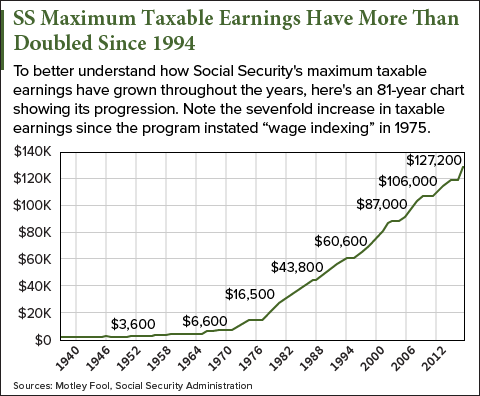
President Donald Trump pledged repeatedly on the campaign trail not to cut Medicare or Social Security benefits.
But something must be done - and soon - to address these entitlement programs' looming financial crisis.
According to Congressional Budget Office estimates released in 2015, Social Security's cash deficit is set to explode to $361 billion in 2025 from $74 billion in 2014.
The CBO's findings also pointed to the $2.8 trillion Social Security trust fund (which includes Medicare expense coverage) to begin its official depletion run late in 2029, after which its revenue will cover only about 75% of scheduled benefits until 2034.
These estimates, of course, pertain to Social Security and Medicare's fate should Uncle Sam take no further actions to thwart the programs' demise in the very near future.
And despite Donald Trump's reiterated vows not to cut SS benefits, his nomination for budget director - Rep. Mick Mulvaney (R-SC) - suggests he might do just that...
Trump's First Option for Social Security: Cut Benefits
In his Senate testimony last Tuesday (Jan. 25), Mulvaney stated he believes cuts to Social Security and Medicare are necessary in order to keep the programs solvent. His statement directly contradicted Trump's campaign pledges about entitlement programs.
"I have no reason to believe the president has changed his mind" on not touching entitlement programs, Mulvaney said, according to The Washington Post on Jan. 24. But, he added, "My job ... is to be completely and brutally honest with him."
The South Carolina senator clarified his stance by stating his proposed cuts would not affect current recipients.
Must Read: These are the best stocks to buy for a profitable 2017.
Mulvaney also suggested immediate "means-testing" for those applying for Medicare benefits to begin as early as this year.
Means-testing is a method used by the government to determine whether someone qualifies for a financial assistance program. Insofar as Medicare is concerned, Mulvaney's plan would make Medicare available to retirement-age individuals on a case-by-case basis - thereby stripping away the program's designated "entitlement" status.
Aside from cutting benefits to these entitlement programs, however, there is another controversial option President Trump could utilize to stifle Social Security's fiscal demise...
[mmpazkzone name="in-story" network="9794" site="307044" id="137008" type="4"]
Trump's Second Option for Social Security: Increase Payroll Taxes
Another method to keep entitlement programs solvent would be to increase payroll taxes across the board for all working Americans.
Last year's Social Security Trustees report listed an actuarial deficit of 2.66% in 2016, suggesting that a 2.66% increase in the payroll tax should sustain the program without the need for benefit cuts through the year 2090.
The problem with enacting an across-the-board hike is that it poses a potential burden on lower-income and middle-class individuals and families.
According to a 2014 survey by the National Academy of Social Insurance, the most popular solution among citizens interviewed at random would actually be a combination of gradually increasing the Social Security tax rate from its current 6.2% to 7.2% for both employers and employees while removing the cap on Social Security taxable wages altogether.
Historically, Social Security's payroll tax cap wasn't always wage-indexed. That method was undertaken in 1975 when Congress felt that retirees needed a raise and the program needed more revenue. From 1937 to 1971, the cap was instated arbitrarily - on an "as-needed" basis. From 1972 to 1974, the maximum taxable earnings were determined by amendments passed in 1972.

Currently, any wages earned above and beyond $127,200 are free and clear of the payroll tax.
Up Next
Uncle Sam is about to implement another controversial plan - one that likewise threatens the retirement of millions of Americans...
The U.S. government will soon exploit an obscure loophole buried in Title 29 of the U.S. Labor Code to do it. If you have a 401(k), IRA, or any type of retirement account, this could cause you to miss out on $68,870 or more. Learn more...
Follow Money Morning on Twitter @moneymorning or Facebook.


